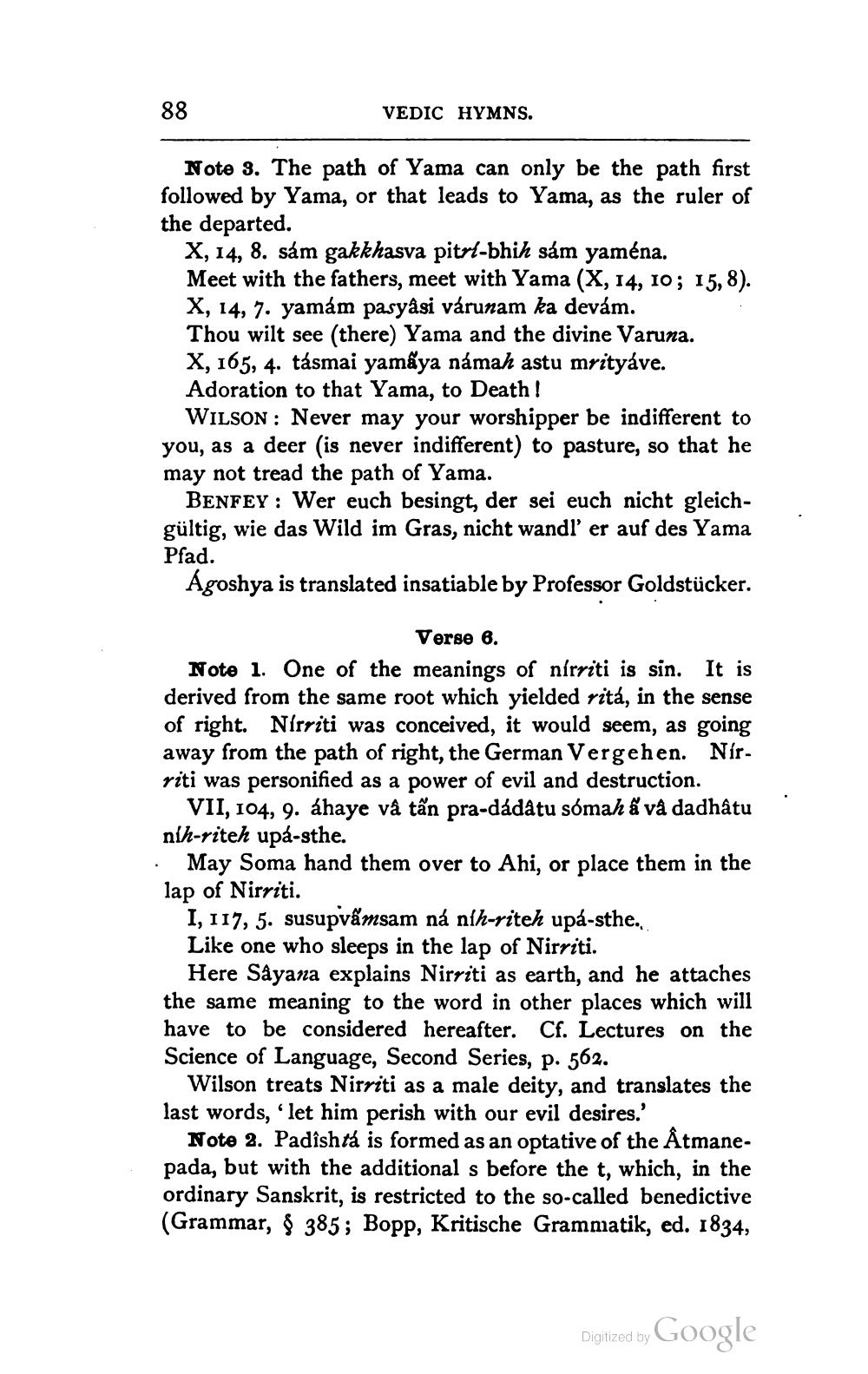________________
88
VEDIC HYMNS.
Note 3. The path of Yama can only be the path first followed by Yama, or that leads to Yama, as the ruler of the departed.
X, 14, 8. sám gakkhasva pitrl-bhih sám yaména. Meet with the fathers, meet with Yama (X, 14, 10; 15,8). X, 14, 7. yamám pasyâsi várunam ka devám. Thou wilt see there) Yama and the divine Varuna. X, 165, 4. tásmai yamaya námah astu mrityáve. Adoration to that Yama, to Death!
WILSON : Never may your worshipper be indifferent to you, as a deer (is never indifferent) to pasture, so that he may not tread the path of Yama.
BENFEY : Wer euch besingt, der sei euch nicht gleichgültig, wie das Wild im Gras, nicht wandler auf des Yama Pfad.
Agoshya is translated insatiable by Professor Goldstücker.
Verse 6. Note 1. One of the meanings of nírriti is sin. It is derived from the same root which yielded ritá, in the sense of right. Nirriti was conceived, it would seem, as going away from the path of right, the German Vergehen. Nír. riti was personified as a power of evil and destruction.
| VII, IO4, 9. Chaye và tẩn pra-didatu somah a và dadhâtu nih-riteh upá-sthe. · May Soma hand them over to Ahi, or place them in the lap of Nirriti.
I, 117, 5. susupvấmsam na níh-riteh upá-sthe. Like one who sleeps in the lap of Nirriti.
Here Sayana explains Nirriti as earth, and he attaches the same meaning to the word in other places which will have to be considered hereafter. Cf. Lectures on the Science of Language, Second Series, p. 562.
Wilson treats Nirriti as a male deity, and translates the last words, ' let him perish with our evil desires.'
Note 2. Padîshtá is formed as an optative of the Åtmane. pada, but with the additional s before the t, which, in the ordinary Sanskrit, is restricted to the so-called benedictive (Grammar, $ 385; Bopp, Kritische Grammatik, ed. 1834,
Digitized by
Digitized by Google




